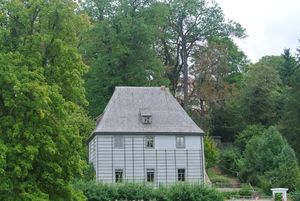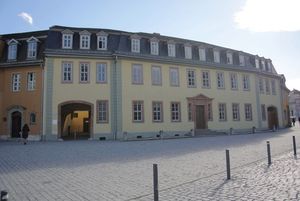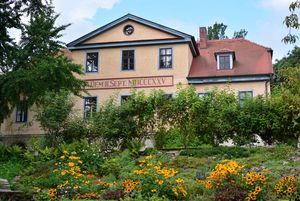Goethe - Landscapes in Thuringia - Associative Places and Landscapes in the Life and Work of Johann Wolfgang von Goethe
by Jessica Machalett
"This is the pleasure of traveling, that even the ordinary wins the prestige of an adventure through novelty and surprise." The master's thesis reflects the eventful life of Johann Wolfgang von Goethe with his work and the influence of his ideas on his adopted homeland in Thuringia. Even today, his works are among the highlights of world literature. Combined together the efforts of both Friedrich Schiller and Johann Wolfgang von Goethe are considered one of the most remarkable representatives of Weimar Classicism.
As a poet, he gained prestige and fame, but he was also acclaimed as a theater director, naturalist, art theorist, and statesman. His impetuous passion for knowledge kept him breaking new ground and inspired him to implement new ideas. Following up on an invitation from the Weimar court, the young Goethe happened to visit Weimar in 1775. The poet, who was already renowned all over Europe at that time, soon adapted to his "new" life in Weimar. In May 1776 he wrote about his experiences in Thuringia "Die Gegend ist Herrlich” during a stay at Ilmenau.
There were many places in Thuringia that inspired the poet. His obligations as a statesman drew him to the most diverse regions of Thuringia. Above all, however, his admiration for nature allowed him to reach out to the smallest and most hidden places in Thuringia. He quotes, “Steile Gegenden lassen sich nur durch Umwege erklimmen, auf der Ebene führen gerade Wege von einem Ort zum andern” while describing his experience. His drawings, poems, and other activities reflect the impressions of the Thuringian landscape. Only on the basis of remembrance, the next generations will perceive these places, which Goethe wandered around and used as his inspiration.
The master thesis aims to contribute to the analysis and documenting the life of Johann Wolfgang von Goethe. In addition to the literary works that are already published, the illustrated map form the basis for further interpretation. The map helps to locate the events in Thuringia. The research work also shows that the records that were documented in the context of this work are often not completely consistent nor properly documented. This made it difficult to edit and analyze the relationships to the area of study in some places.
The interpretation of Johann Wolfgang von Goethe’s work can be found in many places as an elucidation of cultural landscape theory. Carried out as memories of ‘Goethe places’ represent a peculiar character to these regions. The "Genius loci" forms the basic concept for the ‘Goethe-Places’ that are developed in the master thesis and above all these areas are further interpreted as Goethe-landscape.
The cities of Weimar, Jena and Ilmenau form as hot spots of Goethe-places and are considered to be Goethe's largest sites of activity. These cities are derived as ‘Goethe-City-Triangle’ that forms the area of the greatest concentration of Goethe places. These areas could be considered as "Goethe landscape" in the master thesis, also could be included as essential regions of Thuringia and featuring as a landscape of special characters in the middle of Germany.
Jessica Machalett, 13.01.2016
Downloads
 Goethe's lyrical-poetic literary works (2.6 MB)
Goethe's lyrical-poetic literary works (2.6 MB) Goethe's memorial sites (2.4 MB)
Goethe's memorial sites (2.4 MB) Goethe's itineraries in thuringia (5.7 MB)
Goethe's itineraries in thuringia (5.7 MB) overview map (2.9 MB)
overview map (2.9 MB) Goethe's places of work (2.6 MB)
Goethe's places of work (2.6 MB)  places shown in Goethe's drawings
places shown in Goethe's drawings
(2.9 MB) "Goethe landscape" in thuringia
"Goethe landscape" in thuringia
(4.9 MB)


